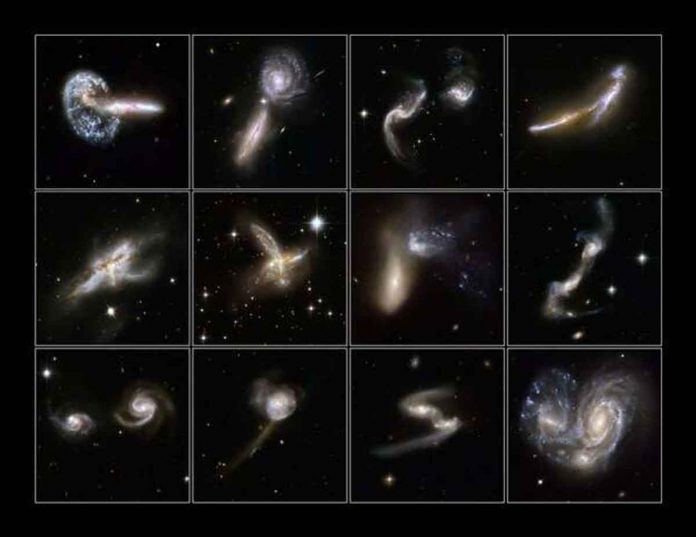Astronomers in the United Kingdom announced today that they have discovered how galaxies like our own Milky Way formed over 10 billion years of cosmic time by colliding with an abundance of separate galaxies. Galaxies are the universe’s largest single objects, and the origin of their formation is a very old question with no obvious answers. A major study published this week in The Astrophysical Journal of the American Astronomical Society has provided a solution to this problem.
Astronomers at The University of Manchester, led by Professor of Extragalactic Astronomy Christopher Conselice, have now established that this effect of merging is one of the dominant processes by which galaxies form.
This decades-long study of galaxies and how they formed over the last 10 billion years has concluded that galaxy mergers are one of the most important methods for forming galaxies. Over the last 10 billion years, the average massive galaxy will have three mergers with other galaxies, which will more than double their mass. Thus, this research has demonstrated that mergers are a very effective way for galaxies to form.
“This also implies that our own Milky Way galaxy has likely undergone at least one of these significant mergers during its history, radically changing its shape and formation history,” Professor Conselice said. “Mergers like the ones studied here trigger star formation, which may be the origin event for how stars like our Sun formed, as well as feed the matter that grows central black holes.”
In the nearby universe, galaxies come in all shapes and sizes. Some of them, including our own, are enormous, with trillions of stars and a spiral pattern. Others are massive collections of stars with spheroidal or ellipsoidal structures and no discernible patterns. The history of these massive systems is mostly unknown.
One way for galaxies to grow in mass is for two galaxies to collide and form an entirely new galaxy, a process known as merging. Galaxy mergers have been known for more than a half-century, but their role in producing the massive galaxies we see today has remained a huge mystery and a fundamental question in cosmology. While this is a popular theoretical idea, we could only guess at how the process actually occurred.
The findings of this study are the result of a 10-billion-year search for galaxies in close proximity, or in “pairs.” Over the course of a billion years, these nearby galaxies will merge to form a new system. This study determined the merger history, and thus the formation history of galaxies in the universe, by catching these galaxies in the merger process. Prior to this study, mostly only theoretical estimates were available. This research is a direct measure of the process.
Conselice stated “Due to the total number of galaxies in the universe, approximately 2 trillion of these merger events would have occurred over the last 10 billion years. Many of these events, which are the most common massive coalescence events in the universe, will be detectable by upcoming gravitational wave experiments.”
This previously unknown history now allows us to understand galaxies in ways we never could before. Future research by this group and others will reveal the implications of this discovery for understanding the formation of new stars and black holes in galaxies during this cosmic epoch.

